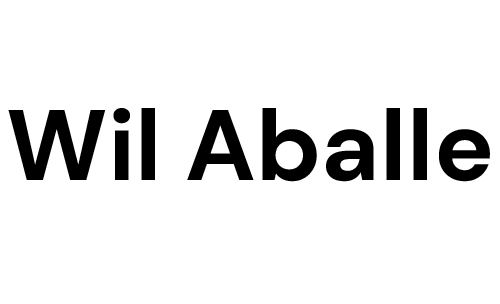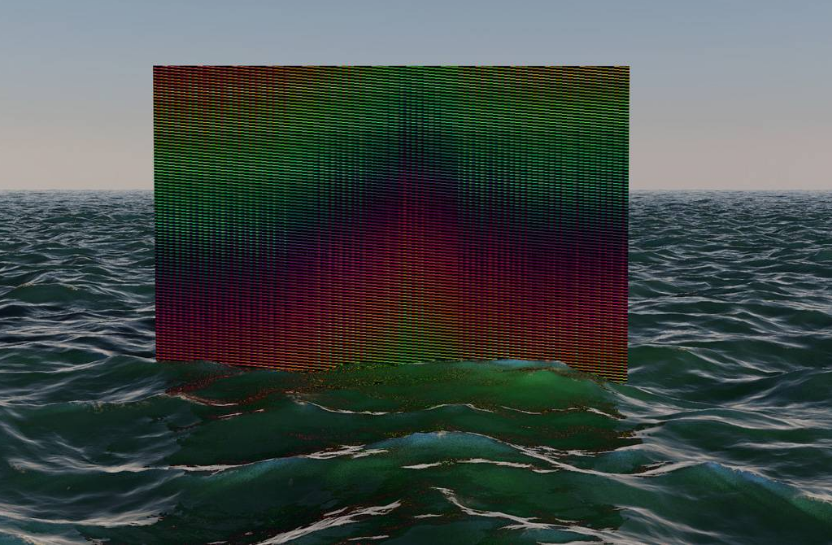NICOLAS SASSOON AND RICK SILVA MELD OPTICAL ART WITH MOVING DIGITAL IMAGES
Robin Laurence, The Georgia Straight Weekly
Nicolas Sassoon and Rick Silva’s huge projection maps the interface between technology and nature
Visitors to Nicolas Sassoon’s East Vancouver studio might already have encountered a version of it online—a virtual representation of where and how he makes his art.
Among the animated GIFs created by this fast-rising computer artist and posted to his website—and featured, too, in laudatory articles and reviews on other digital-art sites—is a flickering rendering of his basement workspace. Depicting a high-tech setup in the unlikely environment of a down-market recreation room, it includes representations of fake wood panelling and a homely brick fireplace. Also evident in both the virtual and actual interiors is a moving abstraction on a wall-mounted screen—Sassoon’s 21st-century version of 1960s op art. His current practice is exemplified by the pixelated patterns and simplified 3-D style of his animated GIFs, intentionally referencing early computer games.
“My work is heavily influenced by the history of computer graphics,” he tells the Straight. “And it is also influenced by kinetic art and optical art.”
Sassoon has created a large portfolio of moving digital images, from pure abstractions to fantasy visions of architectural structures that address both utopian and dystopian possibilities. Recently, he has also been exploring the fraught interface between computer technology and the natural world, as seen in the panoramic, gallery-filling video that he and Portland artist Rick Silva are exhibiting at Wil Aballe Art Projects. Titled SIGNALS and opening Thursday night (December 10), the monumental projection depicts rolling ocean waves that appear to be covered in an oily slick, an impression created by the imposition of an iridescent moiré pattern on the digitized sea.
“Rick and I have a common interest in Pacific Northwest landscape and how it can be translated through computer technology,” Sassoon says. “We have different areas of expertise—Rick is more versed in realistic 3-D rendering, while I focus more on pixelated patterns and primitive 3-D.” Their most recent collaboration, from a series of related works, has a foreboding, sci-fi mood to it. “Elements of the landscape are somehow crossing with something technological or toxic or chemical,” Sassoon says. “An indeterminate element.”
Born and educated in France, with an MFA in new media and interactivity from the École Européenne Supérieure de l’Image in Angoulême, Sassoon moved to Vancouver in 2008. He was drawn here, he says, by his interest in North American culture and by the work of internationally renowned local artists Stan Douglas and Jeff Wall. He made the move in the company of his closest friend, Sylvain Sailly, who is also a frequent collaborator. Together with Sara Ludy, Sassoon and Sailly have formed the digital collective WALLPAPERS, and most recently exhibited at the Vancouver Art Gallery. In addition to his online art exhibitions, Sassoon has had impressive solo shows in local, national, and international galleries.
Sitting now in front of his computer, he says he tends to focus more on the optical experience of his chosen medium than on its literal meaning. “What’s interesting to me about screen-based work and computer graphics is to try to create contemplative or meditative experiences,” he explains. Then he adds that as a kid playing computer games in the 1980s and ’90s, he was more fascinated by the way the graphic interfaces looked than by the game itself. “To me, screens have always been about this very strong aesthetic experience”—as compelling as the aesthetics inherent in painting, film, or photography.
Sassoon is also drawn to moiré patterns, a wavery optical effect in digital media caused by one pattern or grid being superimposed on another. Older viewers may associate moiré with an expensive surface treatment of silk fabric, younger viewers with its occurrence as an undesirable artifact in digital scanning or photography. For Sassoon, however, it is an effect rich in philosophical as well as visual possibilities. “Moiré is an optical phenomenon that bridges the physical and digital worlds by existing in both realms,” he says. “There is something very poetic and inherently fantastical about this and I try to explore it in my work.”

